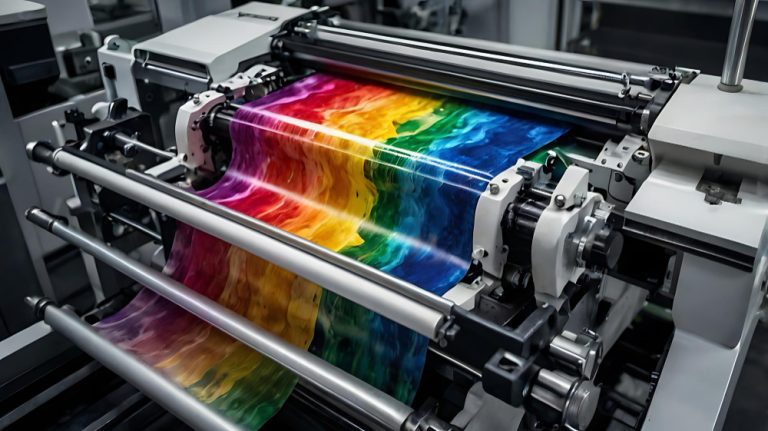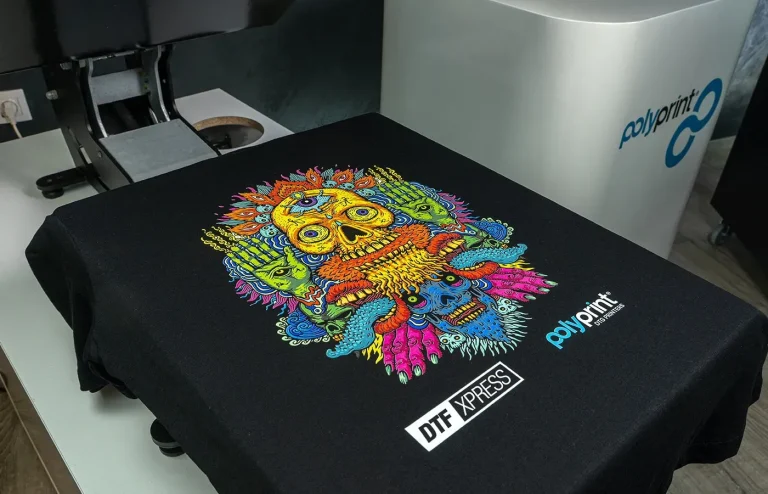DTF Printing vs. Screen Printing: Ultimate Comparison Guide
In the vibrant realm of custom apparel printing, ***DTF printing***, or Direct-to-Film printing, has emerged as a revolutionary technique that captures attention for its stunning detail and versatility. This innovative method allows creators to bring intricate designs to life, setting it apart from traditional approaches like screen printing. While screen printing boasts cost-effectiveness for large orders and durability, DTF printing excels in producing vibrant graphics with fine details that can beautify a wide range of fabrics. As we dive into the specifics of DTF vs. screen printing, we’ll explore the advantages and disadvantages of each method, helping you determine the best fit for your next project. Join us in this comparative guide to uncover the essentials of modern custom printing and make informed decisions for your artistic endeavors.
When considering the world of printing techniques, the discussion often circles around direct-to-film methods and traditional stencil-based methods. Known for their high adaptability, the direct-to-film approach offers significant advantages for those focusing on bespoke apparel designs, while screen printing maintains its reputation for efficiency with bulk orders. Each technique presents unique characteristics, from the intricate dyeing capabilities of DTF printing to the rapid production speeds of screen printing. Understanding these distinct methods and their respective impacts on fabric design is crucial for businesses looking to elevate their custom apparel offerings. Let’s delve deeper into these strategies to discover which printing option best suits your creative vision.
Understanding DTF Printing: Process and Advantages
DTF printing, or Direct-to-Film printing, has become gradually popular due to its innovative approach to transferring designs onto fabric. The process begins with printing an intricate design onto a special film, followed by the application of a powdered adhesive that is heat-cured. This technique allows for a strong bond between the ink and the fabric, yielding vibrant and detailed images that are particularly effective for custom apparel. As businesses increasingly demand designs with sharp details and color gradients, DTF printing stands out in its ability to fulfill these criteria effectively.
One of the notable advantages of DTF printing is its versatility across various fabric types, from cotton to polyester blends. This flexibility caters to a broader range of custom projects, enabling brands to explore unique materials without compromising on quality. Furthermore, DTF printing eliminates the need for high minimum order quantities, making it an ideal choice for small businesses and independent creators who seek to produce limited runs or one-off items.
Screen Printing Explained: Process and Benefits
Screen printing is a traditional technique that involves creating a stencil for each color in the desired design. Ink is then pushed through these screens directly onto the fabric, which is most effective for producing bold colors and designs. The process is particularly advantageous for high-volume orders, as the setup costs can be dispersed over a larger number of items, making it much more cost-effective for bulk production.
An advantage of screen printing is its exceptional durability. The inks used in screen printing are thicker than those used in many other printing methods, resulting in vibrant colors that can withstand repeated washing. Additionally, screen printing is quick once the initial setup is complete, allowing for speedy production of large batches. This combination of longevity and efficiency has made screen printing a favored option for promotional apparel and team uniforms.
DTF vs Screen Printing: Key Differences
When comparing DTF printing and screen printing, one of the primary differences lies in their approach to design application. DTF printing excels at reproducing fine details and color depths, making it an ideal choice for intricate graphics or photorealistic designs. Conversely, screen printing is more suited for bold and solid color designs, which can limit its effectiveness in capturing detailed artwork. Thus, the choice between the two may significantly depend on the level of detail required for a specific project.
Another notable distinction is the efficiency of production runs. Screen printing tends to be more economical for large orders due to reduced setup costs per unit, while DTF printing shines in small runs without the burden of minimum quantities. As such, businesses must consider their production volume and design complexity when choosing between these two techniques, ensuring they select the method that best aligns with their project goals.
The Advantages of DTF Printing
DTF printing offers several advantages that make it an appealing choice for custom apparel printing. Among these is its rapid production capability, especially for projects that demand high detail and color fidelity. DTF printers can produce vibrant color outputs and intricate designs without the limitations present in traditional methods, making it perfect for modern designs that may incorporate gradients, photographs, and subtle color transitions.
Additionally, DTF printing supports a diverse range of fabrics, enabling designers to create unique and textured garments across cotton, polyester, and blends. This versatility opens up new opportunities for creative expression and personalization in apparel, allowing businesses to cater to niche markets with specialized fabric needs without sacrificing print quality. Furthermore, DTF printing techniques result in minimal waste, aligning well with sustainability goals in the fashion and textile industries.
Limitations of Screen Printing
Despite its many benefits, screen printing does have certain limitations that can impact its suitability for specific projects. For example, while screen printing excels in producing bold, solid designs, it often struggles with intricate and detailed graphics. This limitation may make it less favorable for projects that require fine detail, demanding that designers either simplify their artwork or reconsider using a different printing method such as DTF.
The setup process for screen printing also tends to be time-consuming and labor-intensive, making it less viable for small orders. Each color in a design requires a separate screen, which can significantly delay production time. For businesses looking to produce smaller runs or an array of unique designs, this aspect of screen printing can lead to increased costs and longer turnaround times, underscoring the need to evaluate project requirements carefully before selecting a printing technique.
Choosing the Right Printing Method for Your Project
When determining whether to utilize DTF printing or screen printing for your custom apparel project, it is essential to consider several factors. The first consideration should be the complexity and detail of the design; intricate images may likely benefit from the capabilities of DTF printing, while simpler, bolder designs might be better suited for screen printing. Additionally, the volume of items you plan to produce plays a crucial role; screen printing generally offers better economies of scale for higher quantities due to cost per unit considerations.
Fabric type is another essential factor in your decision-making process. If your project requires printing on various materials, DTF printing’s versatility can be a significant advantage. Businesses aiming to showcase versatility in their product range should consider the broader application possibilities of DTF printing over screen printing’s limitations in fabric compatibility. Ultimately, understanding these dimensions will guide you in selecting the best printing method aligned with your marketing and production goals.
Frequently Asked Questions
What is DTF printing and how does it differ from screen printing?
**DTF printing** (Direct-to-Film) is a process where designs are printed onto a special transfer film, coated with adhesive powder, and then heat-pressed onto fabric. Unlike **screen printing**, which uses stencils for each color, DTF is more versatile, allowing high detail and vibrant colors even on various fabric types. This contrast makes DTF printing advantageous for intricate designs, while screen printing is better suited for bulk orders with solid colors.
What are the advantages of DTF printing over screen printing?
The **advantages of DTF printing** include its ability to produce high-quality, detailed designs on various materials beyond cotton. It requires no minimum order quantities, making it economical for small runs, and the prints are durable, resisting fading and cracking. In contrast, **screen printing** can be more cost-effective for large orders but struggles with intricate details compared to DTF.
What are the disadvantages of screen printing compared to DTF printing?
**Disadvantages of screen printing** include time-intensive setup for creating screens, which can be laborious and costly for small runs. Additionally, screen printing is limited in fabric compatibility and may not capture intricate designs as well as **DTF printing**. These factors make screen printing less favorable for custom, detailed projects.
Is DTF printing more economical for small runs than screen printing?
Yes, **DTF printing** is generally more economical for small runs due to its lack of minimum order requirements. Unlike **screen printing**, which incurs higher setup costs that spread over larger quantities, DTF allows businesses to print smaller quantities without additional financial burden, making it ideal for custom apparel.
Can you achieve vibrant colors with DTF printing as compared to screen printing?
Yes, **DTF printing** excels in producing vibrant colors and intricate designs, often outperforming **screen printing** in this regard. The process captures fine details and color gradients exceptionally well, creating photorealistic imagery. While screen printing can achieve vibrant results, it may not handle complex designs as effectively as DTF.
What should I consider when choosing between DTF printing and screen printing?
When choosing between **DTF printing** and **screen printing**, consider factors such as the complexity of your design, the volume of items needed, and the fabric type. DTF is ideal for detailed, custom designs on various materials, while screen printing is better for large quantities with simpler designs. Analyze your project’s specific requirements to make an informed decision.
| Aspect | DTF Printing | Screen Printing |
|---|---|---|
| Process | Prints onto transfer film, uses heat and adhesive to transfer to fabric. | Creates a stencil for each color, ink applied directly onto fabric. |
| Pros | Versatile, great detail and color depth, economical for small runs, durable prints. | Cost-effective for bulk orders, long-lasting quality, faster post-setup printing. |
| Cons | High initial costs, quality variability, longer processing time. | Limitations on intricate designs, labor-intensive setup, fabric restrictions. |
Summary
DTF printing is a modern innovation in custom apparel printing that offers a blend of versatility, detail, and practicality for various fabric types. As businesses strive for unique designs with high fidelity, DTF printing emerges as a powerful choice over traditional methods. Its ability to produce intricate graphics with vibrant colors makes it particularly appealing for projects where detail is paramount. While both DTF and screen printing have their strengths and weaknesses, understanding DTF printing’s capabilities will ensure that you choose the best method for your custom printing needs.







